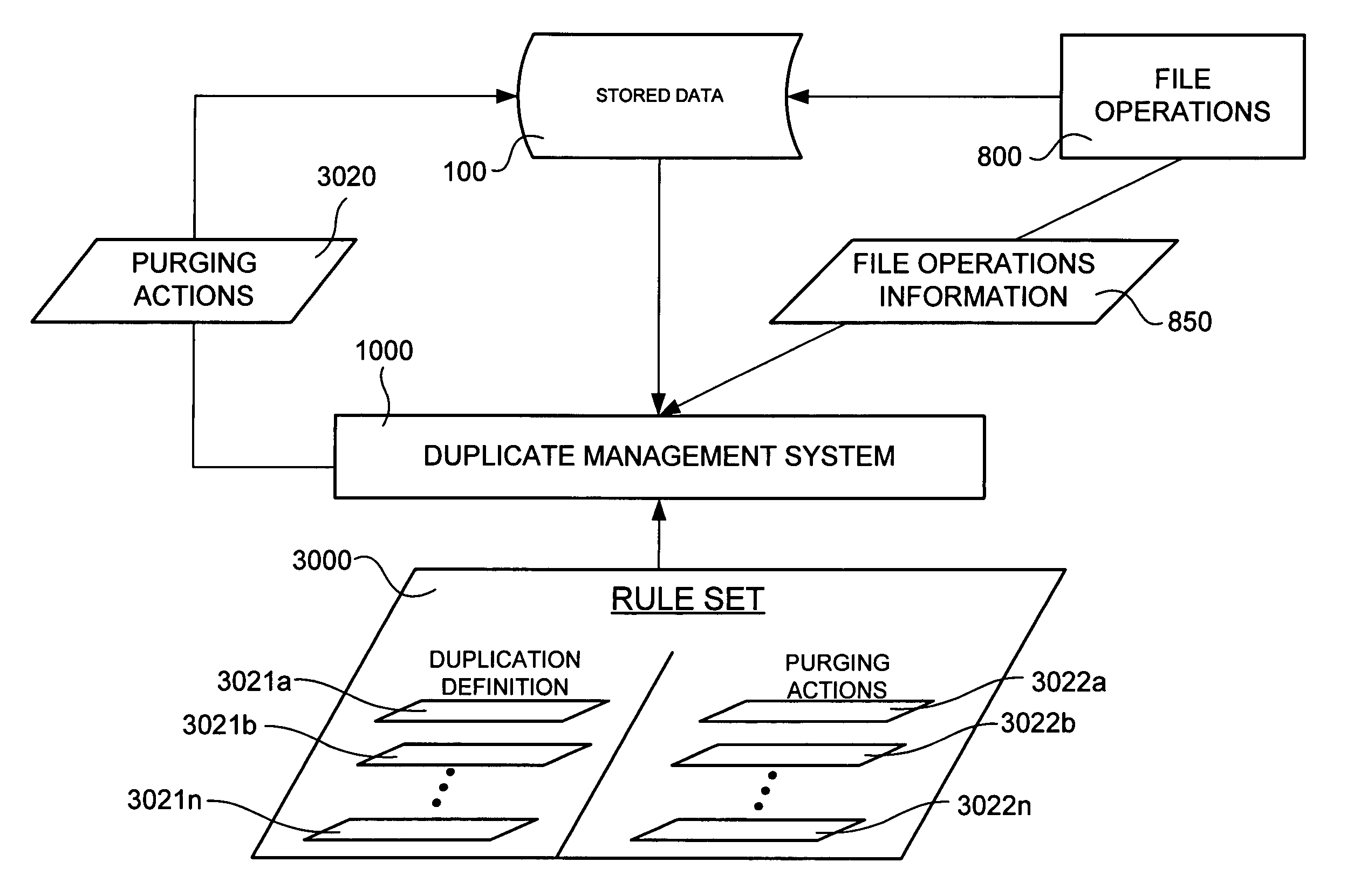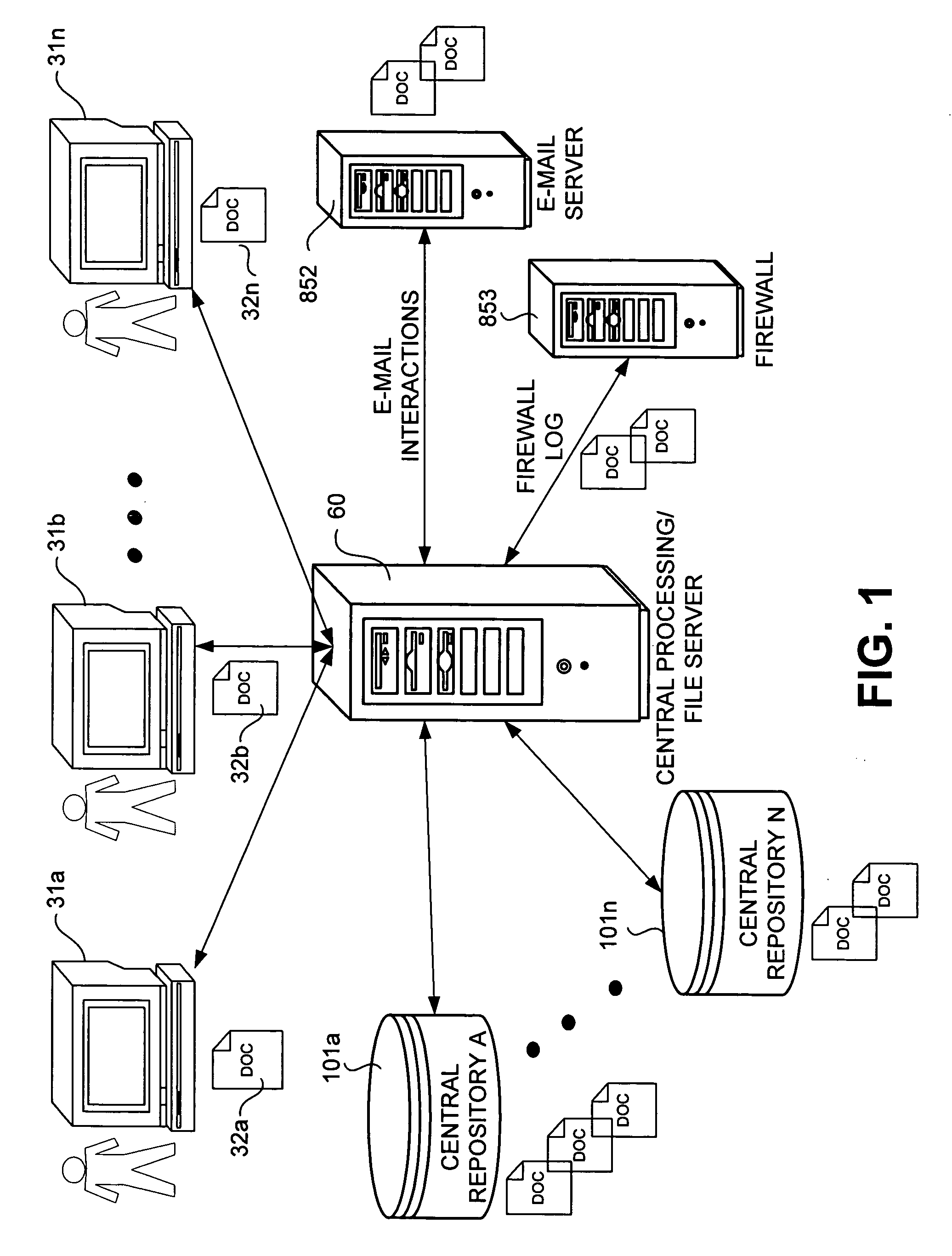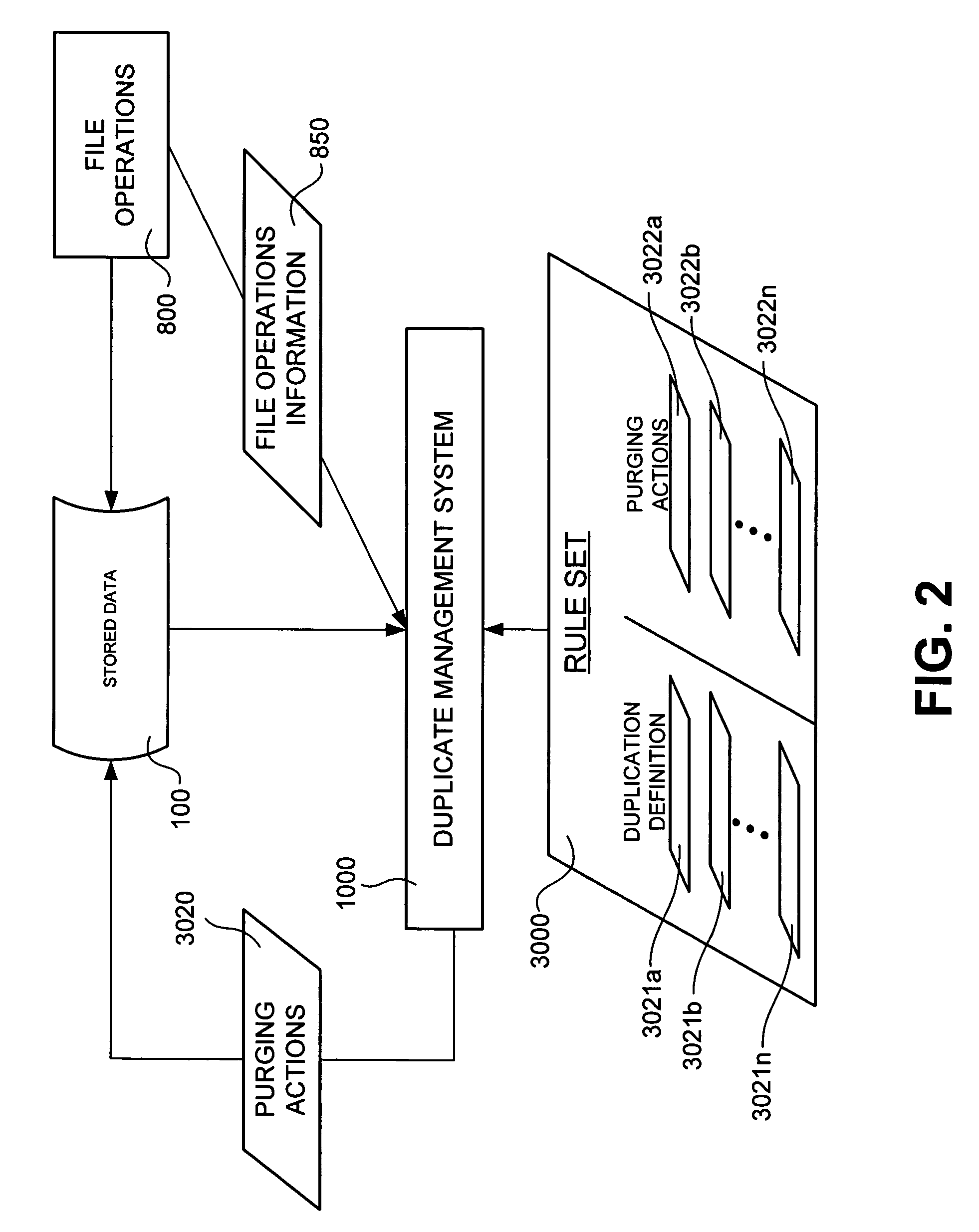Intelligent general duplicate management system
a general and intelligent technology, applied in the field of electronic file management systems, can solve the problems of wasting considerable disk space on duplicate documents and electronic files, negatively affecting the density of duplicates in a particular region of a distributed file server, and difficult to achiev
- Summary
- Abstract
- Description
- Claims
- Application Information
AI Technical Summary
Benefits of technology
Problems solved by technology
Method used
Image
Examples
first embodiment
[0160] In order to facilitate the following discussion, many simplifications will be made. It will be understood by those skilled in the art that the scope of the present invention is in no way limited by the following, simplified example.
[0161] In this embodiment, the search space of the file server is divided into m sections S1, . . . , Sm; one section per user This means that a cell Ci,j will contain all pairs {Fi,Fj} of files such that FiεSi is a file of user i and FjεSj is a file of user j. One advantage of this choice for granularity is that one does not have to take into account the move operation. Indeed, the move operation, being here a compounded copy and delete inside a same section, does not change any of the densities (the dij).
[0162] In this example, it is assumed that most file creations and copies are promptly (before the next duplicate detection) followed by an edit and that the number of duplicates created by downloads from external sites is negligible. Under the...
second embodiment
[0171] In the first embodiment of the present invention, the granularity was fixed to be composed of all pairs of different users' space. In order to attain more precision, it is possible to divide each user space into several sections, taking the cells of the density map to be all pairs of these sections. Or, if there are many users, it may be advantageous to group users into same sections.
[0172] The idea is to define the cells of the density map so that they will exhibit large differences of densities. In the previous scheme, these cells were fixed in advance. This second embodiment shows how the “shape” of these cells can be changed dynamically so as to adapt to present and / or forecasted densities.
[0173] This technique is illustrated using the simple directory structure depicted in FIG. 16. The directory structure is represented by a rooted tree where the root node 2 is the highest level directory, containing one directory per user. These user directories are represented as chi...
third embodiment
[0189] In the two previous embodiments, the operations monitoring process 820 obtained its information only from records readily available from the file server. This allows for a non-intrusive application. Yet, much more efficient duplicate detection is possible if the operations monitoring process is made aware of all or most of the file operations that take place in the file server.
[0190] Such an approach has several advantages. First, this system is able to pinpoint the exact location of most duplicates since it is aware of many of the operations that create these. Pinpointing the exact location of duplicates corresponds to having a precise (albeit perhaps approximate) binary density map, that is, one in which, for each pair of files in the system, a 1 is attached if it is believed that the pair is a pair of duplicates, and 0 if not. Given that most pairs of files of the system are not duplicates, this “density map” should be represented as a list of those pairs that are duplica...
PUM
 Login to View More
Login to View More Abstract
Description
Claims
Application Information
 Login to View More
Login to View More - R&D
- Intellectual Property
- Life Sciences
- Materials
- Tech Scout
- Unparalleled Data Quality
- Higher Quality Content
- 60% Fewer Hallucinations
Browse by: Latest US Patents, China's latest patents, Technical Efficacy Thesaurus, Application Domain, Technology Topic, Popular Technical Reports.
© 2025 PatSnap. All rights reserved.Legal|Privacy policy|Modern Slavery Act Transparency Statement|Sitemap|About US| Contact US: help@patsnap.com



